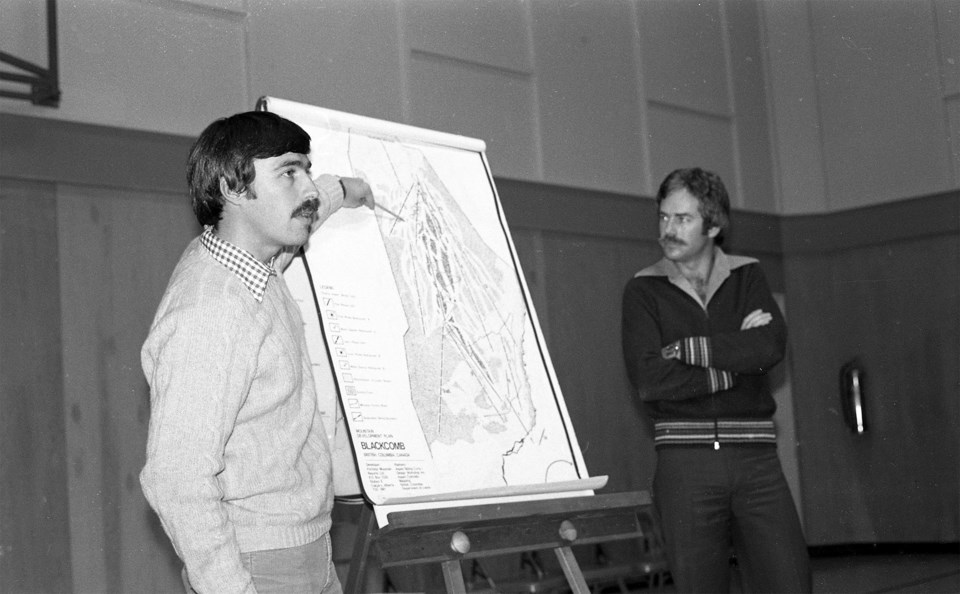When Dave and Lynn Mathews and Hugh Smythe arrived at Fortress Mountain in September 1974, their goal was to turn the ski area around and make it saleable. Snowridge, as it was called at the time, had declared bankruptcy in 1973, and was put up for judicial sale by the Federal Business Development Bank (FBDB). Over the 1974-75 ski season, Dave, Lynn, Hugh and their employees turned Fortress into a successful ski resort, which meant the time had come to sell the operation for the FBDB.
When Dave and Hugh met with Ken Miller of FBDB about selling Fortress, they suggested they approach Aspen Skiing Corp. (later Aspen Ski Co.), then the largest ski company in North America and considered “the top of the pecking order.” A small ski area in Alberta seemed like an unlikely investment for Aspen, but a series of events in Colorado made it a surprisingly good time to approach the company.
According to Hugh, they had heard Darcy Brown, the president of Aspen, was having trouble getting some approvals for developments they wanted to do at Snowmass and so was looking at other potential projects. He was even reported to have made a statement at a public meeting about taking Aspen’s money out of not just the county but the country, which made it seem like an ideal time to approach the company. They travelled to Colorado to pitch Fortress to Darcy, and in 1975 Aspen decided to buy half of the ski resort, leaving the other half with the FBDB.
Once the sale was completed, Dave and Lynn took a bit of time off and then returned to Whistler to manage the Whistler Inn and Resort for Jack and Ann Bright. In June 1975, Aspen asked Hugh to continue managing Fortress. He decided to stay and, like he had while working for Garibaldi Lifts Ltd., began taking night-school classes to learn more about the business side of skiing, this time at SAIT in Calgary.
Over the next few years at Fortress, Hugh got Aspen to invest in the resort’s first triple chair (Aspen needed some convincing that with mazing, singles lines, and clear instructions, triple chairs could be fully loaded) and Fortress began to make a profit. Then, in 1977, a couple of things happened that would influence Whistler’s development; Paul Mathews contacted Hugh and suggested they work together on a development proposal for Blackcomb Mountain, and 20th Century Fox made a lot of money off the success of Star Wars merchandising.
Though the official call for proposals for Blackcomb had not yet been put out by the Province of British Columbia, Paul and Hugh, along with engineer Ken Farquharson, began putting together a bid. To secure financing, they decided to pitch it to the Aspen board of directors. While that pitch didn’t get very far, Al Raine, then in charge of provincial ski-area coordination, reached out to Jerry Blann, who worked in planning for Aspen. Aspen then became interested in Blackcomb and Hugh had to make what he described as “a critical decision in [his] career”: whether to continue with Paul and Ken or stick with his employer. Like at Fortress in 1975, he decided to stay with Aspen.
In 1978, 20th Century Fox used the profits from Star Wars to diversify, and bought Aspen. That same year, the province chose the bid from Aspen and development began on Blackcomb Mountain, meaning Hugh returned to Whistler as competition for his previous employer, Garibaldi Lifts. The opening of Blackcomb Mountain on Dec. 4, 1980 was part of an era of huge change and development in Whistler when, with the construction of Whistler Village, Whistler began to look more like the resort you see today. It is possible, however, that Whistler would be quite different if Dave, Lynn and Hugh hadn’t decided to reopen a “derelict ski area” in Alberta back in 1974.




